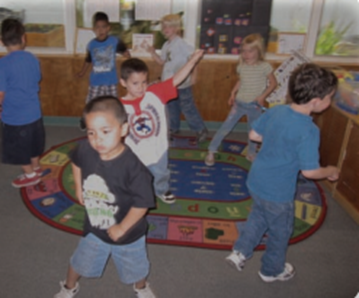10.7: Supporting Dance

Dance
|
|
|
|
|
|
|
|

Research Highlight
Vignettes
References
[7] The California Preschool Curriculum Framework, Volume 2 by the California Department of Education is used with permission

|
|
|
|
|
|
|
|

Research Highlight
Vignettes
References
[7] The California Preschool Curriculum Framework, Volume 2 by the California Department of Education is used with permission
Feedback/Errata